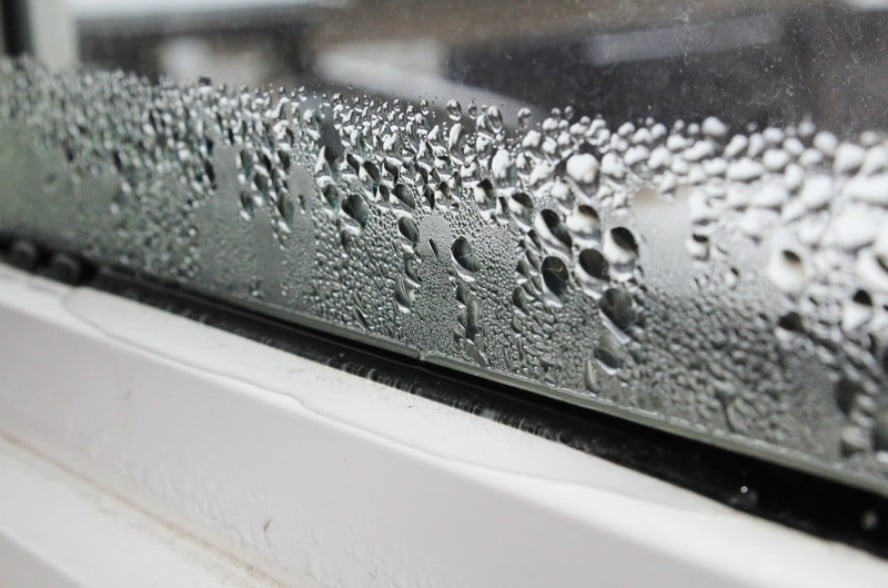While condensation forming on your windows may seem like a cause for concern, most of the time, you don’t need to worry about it too much, particularly if it’s just something that happens occasionally and then goes away.
However, sometimes window condensation, particularly if the moisture is located on the inside of the windowpane or even between panes, can be an indication of problems with the humidity in your house or the glass seals of your windows.
Causes and Risks of Condensation on the Interior
Condensation happens when the temperature of a surface, in this case, the glass of the window, is lower than the dew point of the air around it. That’s why interior window condensation is common during colder months. It’s because the inside of your house is likely to be much warmer than the air outside.
It’s that humidity part that might be a cause for concern. If there’s enough moisture in your home’s air for the windows to fog up, it’s possible that your home’s relative humidity is approaching or even surpassing the EPA-recommended maximum of 60 percent. This can cause air quality issues, dust mite problems, and even mold growth in the case of a very high percentage.
How to Prevent Interior Condensation
To avoid these problems and begin lowering the relative humidity in your home, it can be helpful to purchase an inexpensive tool called a hygrometer. A hygrometer measures the humidity levels in your home so you know if it’s exceeding the recommended amount. Ideally, it should be somewhere in the 30 to 50 percent range.
Lots of things cause relative humidity to go up, such as showering, cooking, having plants in the house, or even using a wood-burning fireplace. Luckily, there are some simple ways to get that to go down.
For example, when cooking or showering, run exhaust fans to dry out the air, or if you don’t have any, crack open the window for a few minutes afterward to let the moisture out. And while you’re at it, try not to keep the windows and blinds closed all the time, as that keeps heat trapped against the glass and makes condensation more likely to happen.
Exterior Condensation and Condensation Between Panes
Typically, exterior condensation is not as much of a cause for concern as interior condensation might be. It’s incredibly common during the spring and summer when you have cool nights and hot days.
Essentially, it’s just like dew forming on the grass outside in the morning, and as the day warms up, the condensation on the windows will burn away.
If you’re concerned about it, though, you can try some water repellant to keep the dew away.
Condensation between panes, however, can be bad news, as it likely means that the seals between the panes of glass have failed, and your window is compromised.
There’s not much way to prevent it, but to get it fixed, you’ll need to call a window professional to inspect the problem and let you know if they can replace the glass itself or if the entire window will need to be replaced.
If you are looking for help with vinyl window replacement, then you have come to the right place. Give the pros at VR Windows & Doors a call today at (416) 717-2730 or send us a message through our contact page.
